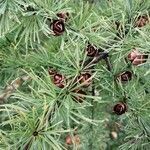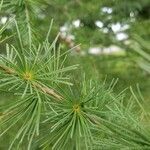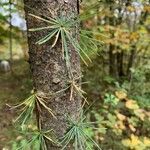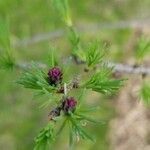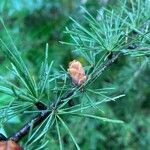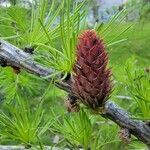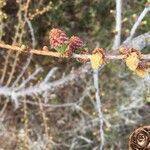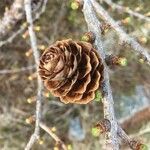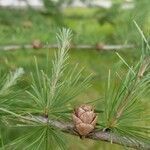A deciduous conifer. It is a medium sized tree. It grows to 25 m high and 40 cm across the trunk. The trunk is slender and straight. The crown is a narrow cone shape. The bark is smooth and grey when young and becomes reddish-brown and scaly with age. The leaves are flattened above and have a keel below. They are triangular or four sided in cross section. They are 2-5 cm long. They are bluish-green. There are 15-60 leaves per tuft. The seed cones are oval and 1-2 cm long. They are light brown. They are on short curved stalks. There are about 20 smooth scales.
Tree to 20 m; lvs soft, very slender, 10–25 mm, light green; cones with 10–18 glabrous scales, red at first, pale brown and 1–2 cm when ripe. Mostly in bogs; Nf. and Lab. to Alas., s. to n. N.J., W.Va., O., n. Ill., and Minn.
